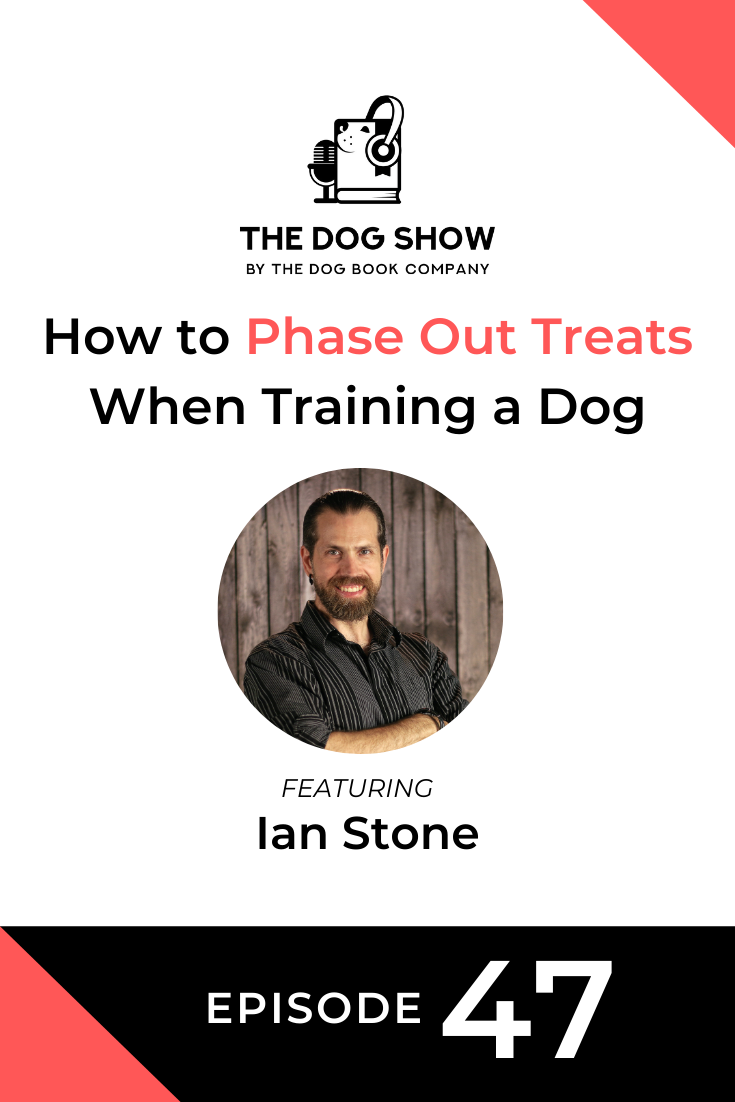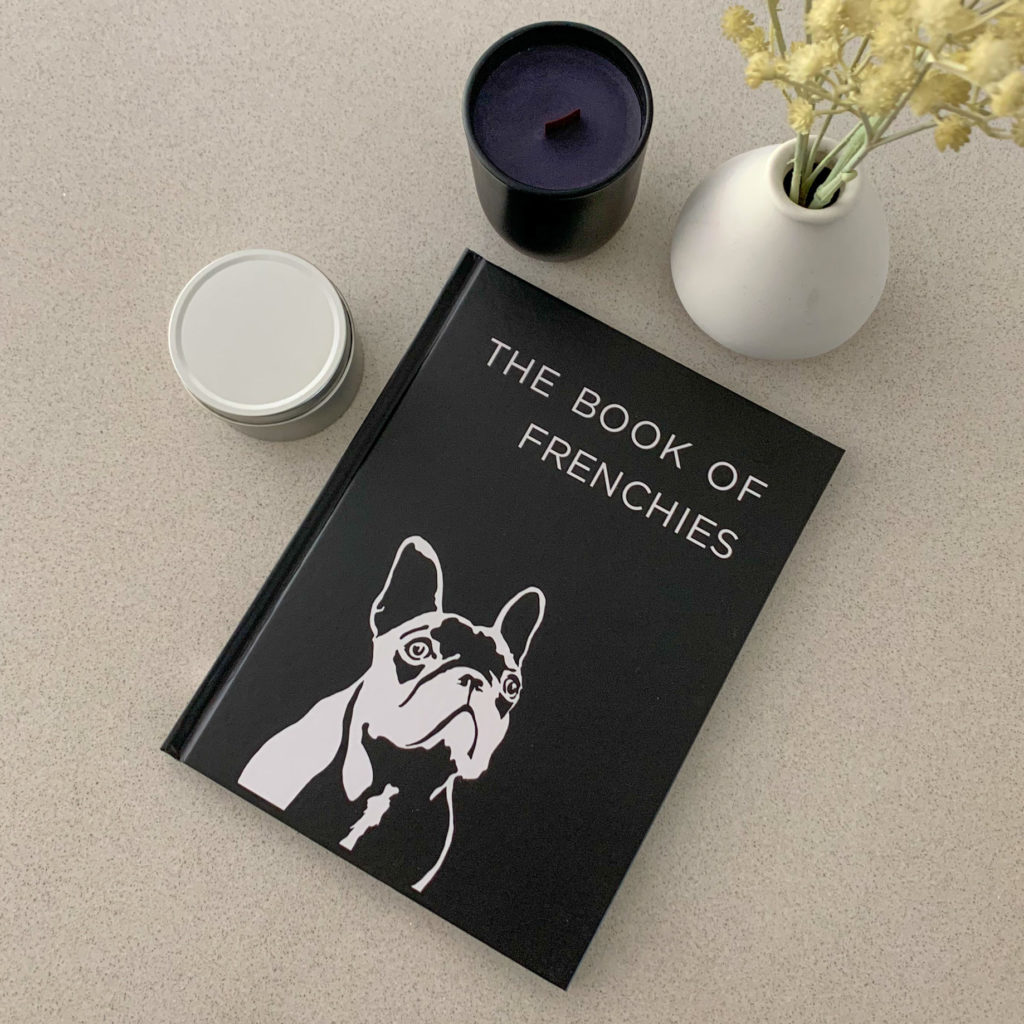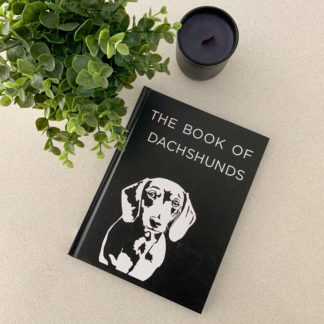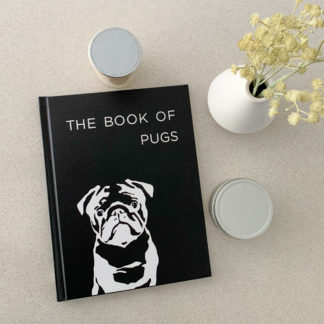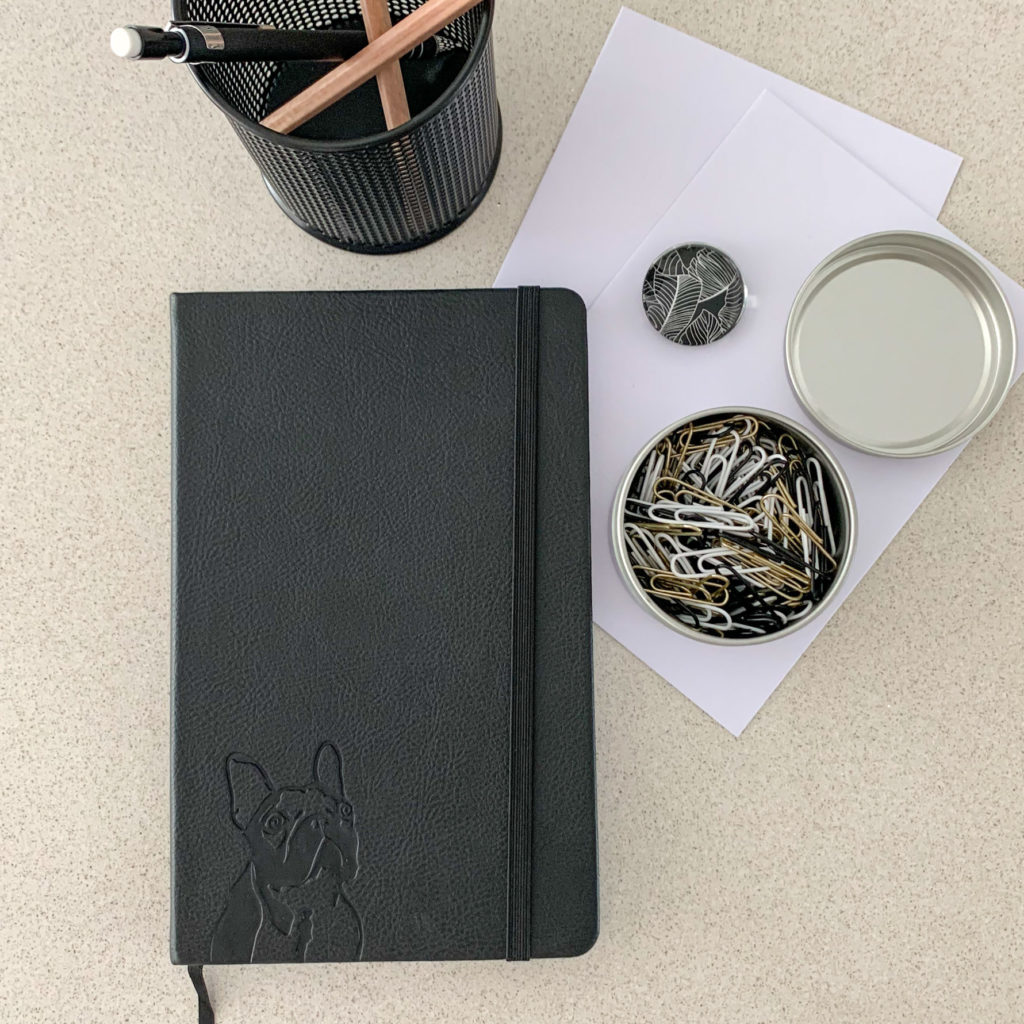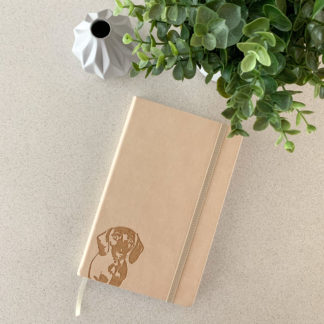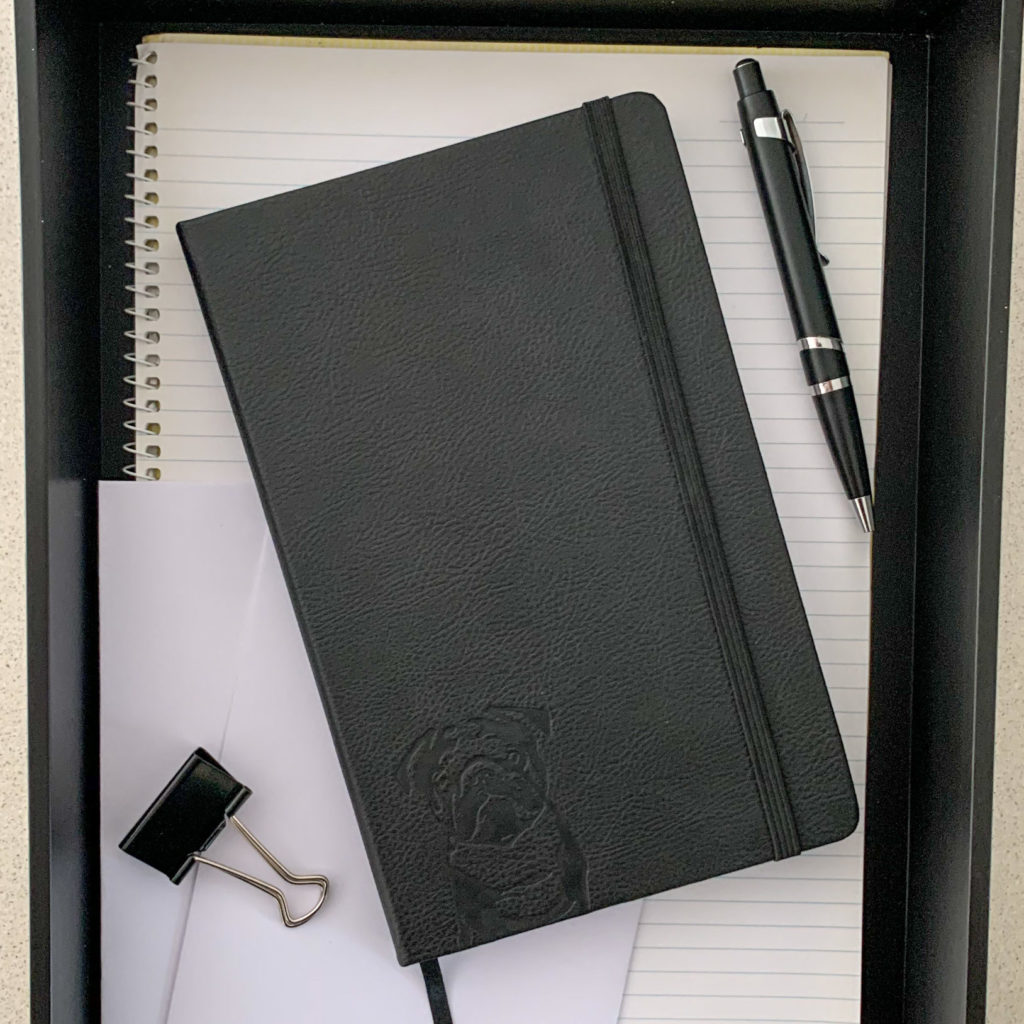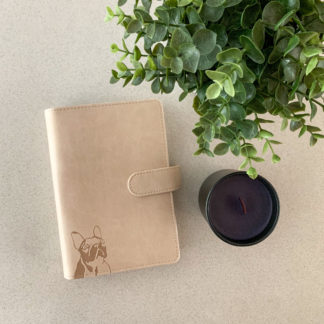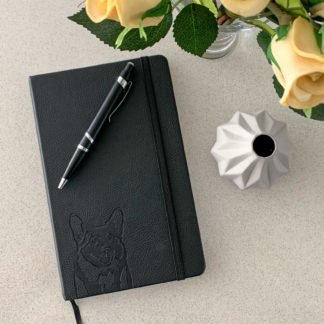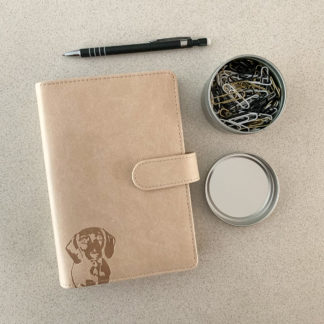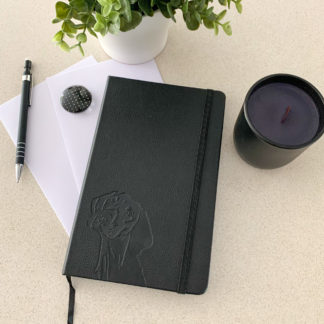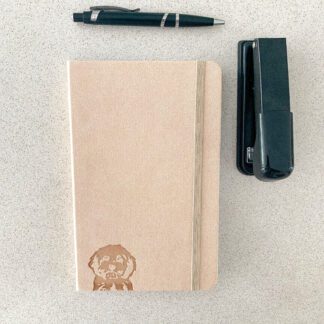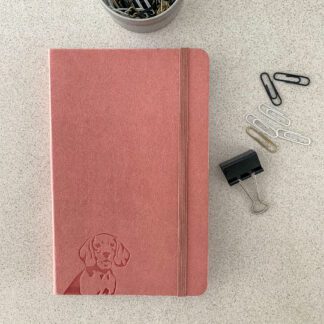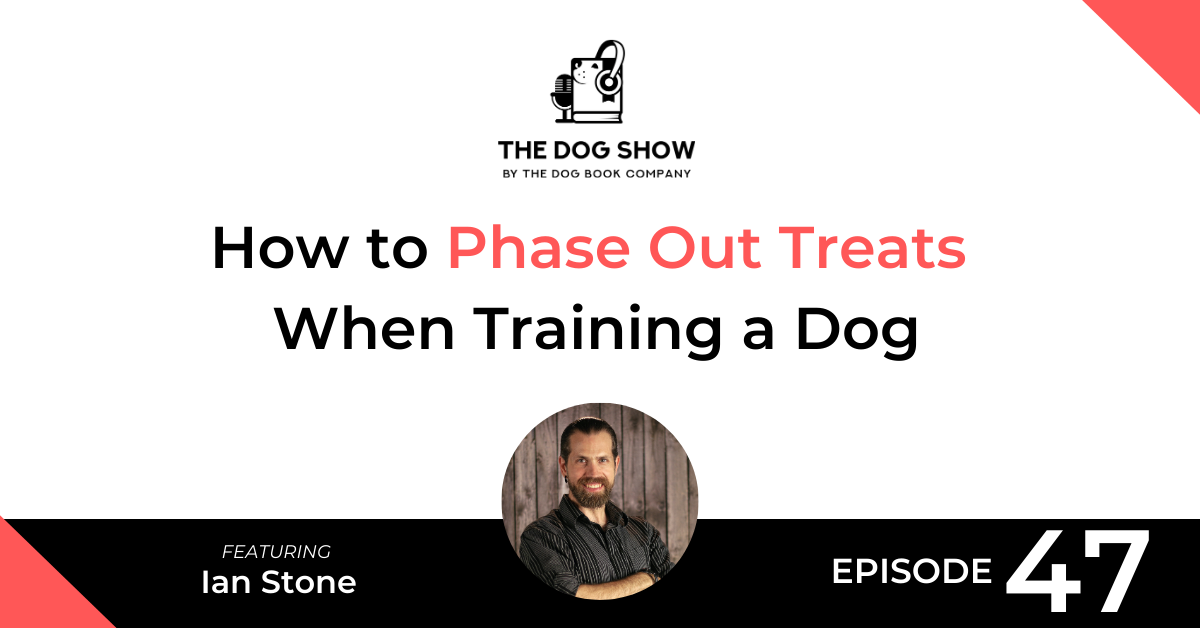
Do you want to phase out treats with your dog training but aren’t sure how?
In this episode of The Dog Show, Ian Stone and I talk about striking a balance between enough treats and too many when training a dog, and how to phase out treats when the time is right.
Ian is the owner and principal trainer of Simpawtico Dog Training. Simpawtico uses intelligent and creative training techniques to help you manage, motivate, and learn about your beloved canine family members.
Ian also has a Master’s degree in teaching from Southern Oregon University and lives with his wife and four dogs in upstate New York.
Find out more about Simpawtico Dog Training here:
Listen
Watch
Read
Will: This episode of “The Dog Show” features Ian Stone. Ian is the owner and principal trainer of Simpawtico Dog Training. Simpawtico uses intelligent and creative training techniques to help you manage, motivate, and learn about your beloved canine family members. Ian also has a Master’s Degree in teaching from Southern Oregon University and lives with his wife and four dogs in Upstate New York. In the interview, we talk about striking a balance between enough treats and too many when training a dog and how to phase out treats when the time is right. Ian Stone, welcome back to “The Dog Show” once again.
Ian: Thank you for having me, Will. Love coming on.
Will: Yeah, it’s always fun to have a chat. And today we’re gonna be talking about an interesting topic because it’s probably not something that people think about a lot. But, obviously, treats are an important thing when you’re training a dog in the early stages. But, at some point, you may wanna phase out those treats and have your dog do things that you’ve trained them to do without needing a treat there. So, I guess my first question to you is should you always use treats as a way to train your dog?
Ian: Well, I don’t know if it’s a matter of should you. I always use food as part of my training. And there’s a lot of benefits with using the food. One of the main benefits is that it’s pretty motivating. I mean food is what we call a primary reinforcer, which means that it doesn’t need to be trained, just right out of the box it works. Now, there’s a caveat to that. You get a lot of people say, “Well, my dog isn’t food-motivated,” and my response to that is, “well, that’s not a personality quirk. That means that something is deficient somewhere else in their life.” Because dogs are opportunistic scavengers descended from hunters, right? I mean for them to not be interested in food is just not natural.
So, you know, I would say like, “If your dog isn’t food-motivated, train them to be food-motivated.” Because, once you can use food, your training moves a lot faster. So, the big benefits with using food is that food tends to keep arousal low and it makes the training very very enjoyable for the dog.
And then, perhaps the biggest benefit for me is that you can bang out a lot of reps really fast with food. So it compresses the time frame that you need to do your training in. And really the secret, the number one secret to training is just reps. It’s like going to the gym. You know, even if you’re doing a junkie exercise, if you do the reps, you’re gonna see benefits. So, with food, I mean you can just…you know, if I’ve got 10 minutes to train a dog before, you know, my favorite show comes on, I can get 50 or 75 reps or something in 10 minutes. I mean that’s a lot.
So, yeah, absolutely, I think there’s a ton of benefit to using food. But, even though it’s a very powerful tool, it’s super easy to become overly reliant on it. And then you’re in trouble. Which is that’s what we’re talking about today.
Will: Yeah. Well, actually something else that came up, which we didn’t plan for, but just now I was thinking about it…I guess if it’s about reps and it’s about that repetition, daily repetition, and to reinforce the behavior teaching the dog, the issue with treats is that you might just overfeed them as well. Right?
Ian: Well, that’s true. You know, so, you definitely wanna use the smallest parcel that you can get away with using. Like I use these little training treats that are the size of like my pinky nail. And then, if I’m working with a small dog, I even break it into halves or even thirds. So, minuscule pieces of food. I would say use the best quality training reward that you can. And then, you know, some dogs are so food-motivated, you can even just use kibble and then their caloric intake is really not significantly that much.
Will: It’s pretty much just the process of them knowing that you’ve got food in your hand and they’re gonna get it off you.
Ian: Well, yeah, right, exactly. So, dogs don’t have a sense of portion. So, if you give a dog, you know, a tiny treat as opposed to like a giant treat, like they don’t really know the difference. All they know is like, “I got something.”
Will: Actually I saw that you’ve got a video on YouTube as well which gives some recommendations about treats and stuff. So, if there’s anyone out there that’s looking for those recommendations, they can check that out.
Ian: For sure, for sure. Yep.
Will: So, do dogs become reliant on those treats during training? And how do you kind of avoid that reliance, if it’s true?
Ian: So, dogs do will become reliant on the treats. And that’s not because you’re using food, it’s because you’re using food improperly. So, the trick is to just make sure that you have your training strategy squared away before you even start using food and to have an exit strategy already in place for it. So, if we know that we’re gonna use food to jump start those behaviors and to build the reps really quickly, then right away…yeah, and this is I’m speaking strictly from my training philosophy. You know, if you ask 10 trainers, you’re gonna get 10 different answers, but this is my take on it is food is the primary reinforcer. But right from the very get-go when I’m building engagement with a dog and I’m starting to kind of establish that training relationship and initiate that conversation that we’re having in training, I start conditioning a ton of secondary reinforcers. The movement, the praise, the petting. The entire interactive experience that goes into reward and reinforcement, so that the food isn’t the only thing I have in my pocket. It’s kind of an 80/20, at this point, but, you know, right away, I have other things in place. You know, so, it’s like, “Yeah, I gave you a $20 bill. I also gave you a Starbucks card and, you know, I told you how good looking you were, and I said that I really love working with you, and I scratched your back and a shoulder rub. You know, the dog is like, “Oh my god, this is phenomenal.”
So, then the secret then is, as you do the work, as the behavior starts to pop, right, you’re starting to establish a behavior, it’s starting to become reliable, it’s starting to become fast, then you progressively start asking for more or less food. But not necessarily less reward. Right? So that 80/20 becomes 60/40, 50/50, you know, 40/60, 20/80. And, so, that dog might still be getting food but they’re getting way less food from me and still getting tons of other of those secondary reinforcers.
And I may be even introducing other primary reinforcers. Like choice. A lot of the research in the last 5 years has said that choice is a primary reinforcer for an organism. So, I make sure that the dog feels like that there’s a perception of choice, that they’re choosing to do these things for me and then they’re being reinforced for it. Even though, you and I, humans know, “I really didn’t give them another option.” It’s like, you know, working with a toddler, you know, when you’re like, “Hey, Will, do you want to put your red sneakers on or your rocket sneakers on today?” Like I really don’t care which sneakers you put on but I want you to feel like you had a choice And you did what I wanted. So, that’s kind of how I phrased my training. And right away I started getting more for less food.
I would say the other big thing you gotta pay attention to is lower reward training is a really big strategy where you’re using the food to manipulate the dog and get them to do the things that you wanna do. And that’s fine, again, to jump start that behavior because they don’t know what you’re trying to get them to do, whether it’s a sit or a down or come to heel or, you know, back up or shake. Or, you know, whatever the heck it is. Sometimes you use that piece of food to help induce that behavior. Well, like I said, once that behavior pops and it’s starting, the dog is like, “Oh, yeah. Okay, I get what I’m supposed to do,” then you’ve got to get rid of the lure and teach the dog, “you perform to make the food appear.” Once you establish that, you know, then the dog’s like, “Oh, okay. I’ll do something and then awesome things happen,” then it’s really easy, you know, like I talked about. And I’m always giving those secondary reinforcers too so the praise, the petting, the movement, the whole interactive experience.
And you can change the spot the food is in, it doesn’t even have to be the first thing it does. You know, you could mark [inaudible 00:09:07], “Yes,” and then move, pet, praise. And then a piece of food, you know, 2 seconds later, the dog is like, “This is great. This is great,” but you’re changing their relationship to food. At that point, it’s pretty easy to just start phasing out the food and replacing with other things. And when you start replacing it with toys or other life rewards, it goes really really fast. You can get a lot of behaviors even without food at that point.
Will: Yeah. So, what I’m hearing you say is you need to find kind of other rewards outside of food-based rewards that you can balance out the training with. And you might start with more food, like 80% initially, but you’re trying to get that down over time, as you get those reps out. What are some of those other rewards? You kind of hinted, [inaudible 00:09:51] you said giving them a toy, I guess giving them praise. What are some other examples of rewards?
Ian: So, like I said, I always put those all at the same time. So, I think people get stuck in using, “Well, I’m using food to train,” and then their entire training system is just pivoting on that piece of food. And it shouldn’t, the food is just a training aid.
So, for example, one of the big parts of my training system is I always have dogs move. And, so, even if I’m using food, they’re moving to access the food, I treat the food like a toy. They chase the food into my hand, or I toss it, or they move into my bubble, or something like that. That makes acquiring the food much more interesting and enjoyable for them.
I’m also using a lot of authentic praise and feedback the whole time. I used a lot of, what I call, touch tactics, which are strategic petting in places that I know that I have established that particular dog likes it. On the shoulders, base of the tail, chin and the chest, the inguinal area inside the thigh. So, you know, a reward event might last 2 seconds, it might last 15, 20, 30 seconds. But, you know, just a piece of food, “Oh, my gosh, that was fantastic. Great job, great job, we’re moving around.” You might even pop another piece of food in there, so you’re getting this kind of sequential payout. But, you know, the intensity in the duration of the reward event is unpredictable. And, so, the dog, you know, is like, “I don’t know man. Sometimes I get a dollar, sometimes I get $100. Sometimes I get $5 that all come out over the space of, you know, 15 seconds.” Like, “This is the greatest fun I’ve ever had. This was fantastic.”
And, essentially, I’m describing the psychology that works behind a slot machine. It’s why people spend all day in front of a slide machine pulling the crank. All I’m doing is teaching the dog just pull the crank, it’s just a different kind of crank.
Will: Yeah, that was where my head was going. I was thinking of, you know, the roulette wheels where it’s like a lucky win. And you spin it around and one of them will be like, you know, a free ticket and the next one will be, you know, 100 bucks or whatever…so, that’s basically what you’re doing.
Ian: See, and then food just becomes one modular component and you’ve de-emphasized it as part of the whole game right away. And, so, when you start rolling it back, you know, there’s other things in place. You know, the dog’s like, “I still feel like a million bucks when I do this stuff with you. That’s great.
Will: What type of time frame are you talking about? So, let’s take, you know, sitting as an example. When you’re teaching your dog to sit using food-based rewards with all those other things you mentioned to try and get them to sit. Like at what point are you slowly further phasing out the food?
Ian: Great question. So, sit is a really…at least in my mind, it’s a really easy behavior to get pretty good pretty quickly. So, let’s say that I have a green dog comes in that isn’t that familiar with a sit on request and I’m almost starting from scratch. So, let’s say that I have a half hour with this dog. So, the first 5 or 10 minutes, I’m just doing engagement. I’m not really asking for a whole lot, I’m just teaching him how I work. So, every time that he orients his body towards me, I mark it. He chases some food. I tell him he’s doing a great job, and he’s like, “You mean all I gotta do is like take a step towards you? This is fantastic.”
So, then he gets invested in the training, and I’m teaching him how I work. You know, I’m teaching him what my words mean, I’m teaching him that moving into me is fantastic. And he’s like, “I’m all in. This is great.” And then I start taking the food and I lure the sit. So, I start luring a sit, boom, same kind of reward event. I lure a bunch of those. And like I said, I just get a whole bunch of reps. In the space of another 5 minutes, I could probably get 25 of those sits. You know, and after 25, he’s like, “I got it. This is great.” Well, honestly, if a dog was going that well with me, I could probably get rid of the lure in the very first session.
So, I tell people, “Get rid of the lure in either the first or the second session with most behaviors.” You know, so, then you make your hand signal, which is the same movement that the lure was making, that’s how you train your hand signal is the movement of the lure. And we do that. The dog does it, you go, “Boom. You still got paid, even though you didn’t see food.” And he’s like…so, it’s a win-win. Fantastic.
Now, that’s usually how people get stuck being dependent on food is they use the lures too long. You know, so, most dogs, you know, where you’re like, “Hey, Fido, sit,” and they’re like, “show me the goods first.” That’s a dog that’s been lured so long that we’ve, inadvertently, taught them that they have to be bribed first. And, so, it really behooves you to get rid of the lure in the first or second session.
Now, more difficult behaviors might take longer. You know, if you were doing come to heel, there’s a lot more moving parts. If you’re doing like station training like a “go to your bed” or something like that…or, you know, something that’s more difficult that requires more precision, you may use food in that way a little bit longer, just as long as you’re cognizant of when you have to hit those certain benchmarks and re-evaluate. You know, if you’re not hitting your goals, more food isn’t necessarily the right answer.
Will: It might be a different approach or something, maybe you’re not taking the right approach. Yeah. It’s interesting. I guess, so, with the simple behaviors like the sittings, it’s really about, you know, fast high-intensity repetition to try and get them so used to that behavior that, therefore, you can wean them off the food more quickly.
Ian: Correct, yep, yep. You kind of just build them almost like a momentum and then they’re doing a whole bunch without even thinking about it.
Will: So, what is, apart from, you know, overeating and I guess just becoming reliant on food from training, like what is the main reason you would want to stop using food for training purposes? Or not stop using it for training purposes but like, once they know a behavior, why would you wanna stop using it?
Ian: Well, okay. So, there’s a couple of reasons. The one is it’s just kind of inconvenient. Like you don’t wanna get into a situation where you’re carrying food with you your whole life. Now, you may carry food with you depending on your training needs for a while but, you know, there has to be an end point to that. You know, be able to take your dog in public without food.
The other part of that is that food has an upper limit to how motivating it is. So, even though I talked about it being a primary reinforcer, it has an upper limit to how motivating it is. And, you know, in a session like I was just talking about, even though you’re cranking out the reps, like your dog is still filling up. You know, so, there’s a satiation element to that and they become less motivated by food the fuller they get with it. So, there’s an upward limit to how much you can get out of food. And because food tends to lower arousal, it’s hard to do some of the high-energy stuff, like if you’re teaching a really fast-come or, you know, this really precise contact feel or, you know, some of these things where you need some real vim and vigor and speed to do these things. Food is hard to get the speed out of. It’s good for kind of getting that behavior to pop, like I said, you’re just getting the beginnings of it. But, as you’re trying to get towards the really good stuff, you’re finishing it out. Food kind of [inaudible 00:17:27] for that.
That’s the point where I usually, once I really start phasing out food, that’s the point where I start introducing toys. So, I don’t ever mix toys and food. It’s either a food session or it’s a toy session. Most of my very first sessions for behavior are all food, so I can establish the behavior and go, “Okay, this is the framework you need to work in.” And when the dog is like, “Okay, I got it,” then I’m like, “great, so, we’re not gonna use food for this. We’re gonna use your toys.” And they’re like, “What? Oh my god.”
So, toys don’t have that upper limit. The more you use toys as a reward, the more rewarding it becomes. You just can’t do the reps. So, toys really kind of [inaudible 00:18:11] for doing the beginning stuff. So, do food and then you can circumvent all the filling up and not being very motivated for food over time by switching over to a toy.” You do things like come or, you know, some heeling, you know, we always finish that stuff off with a toy. And the dog is like, “Yeah, man.”
I mean look at your police and military dogs. I mean, if you watch a demonstration, they go tackle a bad guy, they find some drugs in a locker, and then they run over and they play tug with their handler for a second. It’s the same thing. You know, so, they started that training probably with some food trainings, a reward-based system just to get the behaviors started, and then they switched over to toys. And the dog is like, “I will do this all day long.”
Will: Yeah, yeah. I guess, in summary, based on what we’ve spoken about in terms of phasing out treats is, if I had to summarize it, it’s a complex topic. I mean training dogs with treats is complex but, as a high-level overview, what you’re looking at doing is just getting your reps in as many as possible in a short period of time, depending on what the behavior you’re teaching, but also kind of just slowly phasing down those treats and having other awards available to you.
Ian: Exactly.
Will: I can kind of take their place.
Ian: Exactly right. And really, as soon as possible, just establish that food comes after the behavior. That’s really important. You know, you gotta get past that thing where a dog has to see food to perform. You’ve gotta create that conversation that says, “Hey, look, man. In order to be even eligible for food reward, you have to perform.” And that’s really important piece of that conversation.
Will: From a practical perspective, are you literally talking about, maybe early on, you’re showing them the food and then getting them to do something, and then, later on, maybe the food’s hidden in your pocket or something and then you’re getting them to do something?
Ian: Yep. Yep, yep. Exactly right. Yep. In a pocket or behind your back or, you know, in a bait bag or something like that. And see, that goes back to the idea of choice, that perception of choice. So, you make the dog feel like they’re the one making the rewards appear. You know, they’re like, “I can make you do things. I can make you pull that food out of your pocket.” You and I know that, we’ve set it up, that the things that they do to make the food appear are the things that I wanted them to do anyway. So…
Will: Right. Well, there you have it. That’s all the tips that Ian’s provided today on phasing out treats in training, it’s been very valuable. If you wanna dive deeper on that, jump on his YouTube channel. But, Ian, thanks so much for sharing your expertise about this topic today.
Ian: My pleasure, my pleasure. Always fun talking about training stuff.
From Our Store
-
French Bulldog Coffee Table Book – The Book of Frenchies
From: EUR €34.01 Add to cart -
Dachshund Coffee Table Book – The Book of Dachshunds
From: EUR €34.01 Add to cart -
Pug Coffee Table Book – The Book of Pugs
EUR €34.01 Add to cart -
French Bulldog Notebook – A5, Hardcover, PU Leather, 100gsm Lined Pages, Bookmark (Three Colours)
EUR €19.84 Select options -
Dachshund Notebook – A5, Hardcover, PU Leather, 100gsm Lined Pages, Bookmark (Three Colours)
EUR €19.84 Select options -
Pug Notebook – A5, Hardcover, Black PU Leather, 100gsm Lined Pages, Bookmark (Three Colours)
EUR €19.84 Select options -
French Bulldog Planner – PU Leather Exterior, Metal Loose Leaf Ring Binder, 100gsm Paper (Two Colours)
EUR €36.85 Select options -
Corgi Notebook – A5, Hardcover, Black PU Leather, 100gsm Lined Pages, Bookmark (Three Colours)
EUR €19.84 Select options -
Dachshund Planner – PU Leather Exterior, Metal Loose Leaf Ring Binder, 100gsm Paper (Two Colours)
EUR €36.85 Select options -
Vizsla/Weimaraner Notebook – A5, Hardcover, PU Leather, 100gsm Lined Pages, Bookmark (Three Colours)
EUR €19.84 Select options -
Cavoodle Notebook – A5, Hardcover, Black PU Leather, 100gsm Lined Pages, Bookmark (Three Colours)
EUR €19.84 Select options -
Beagle Notebook – A5, Hardcover, PU Leather, 100gsm Lined Pages, Bookmark (Three Colours)
EUR €19.84 Select options
